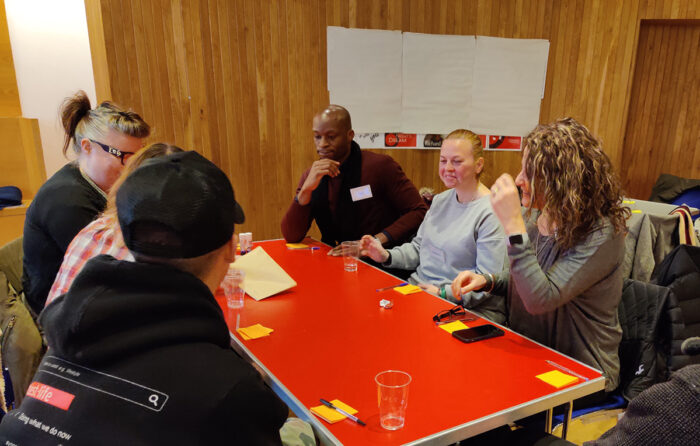- What We Do
- Understanding your audience
- Engaging new audiences
- Designing experiences
- Building loyalty

How many people does it take to make a focus group?
This is a question we hear often. The rules are much clearer with quantitative data – where we can look at confidence intervals and apply quotas and weighting where needed to ensure we’ve got a robust and representative sample.
But we often find people become nervous around qualitative data. And we understand why – we do research for a reason, and it can feel strange do make big decisions based on the views of just 12 people. But qual is also where so much richness and nuance can come from – sometimes nothing can be more valuable than an actual conversation, even if it’s small scale.
There are many options for qualitative research – focus groups, vox pops, online discussion boards, mystery visits, depth interviews are just a few of them. For simplicity, let’s talk about focus groups specifically. There are generally two key questions:
1. How many people should be in a focus group?
2. How many focus groups do I need to do?
The first question is more straightforward. Generally, 4-8 participants per focus group is seen as best practice. [1] More than that and it becomes hard to give everyone enough time/space to speak. Fewer gives less chance of diverse opinions. To set the right number think about the participants and the topic – something sensitive or complicated, keep the numbers smaller. If participants are likely to be highly knowledgeable or passionate (ie have a lot to say!), fewer is better.
The second question can be complicated – there is no firm rule. Definitely more than one, but you might need anywhere between 2 and 50 depending on your objectives. The trick is knowing what factors to consider and asking yourselves the right questions.

An MHM focus group at Shakespeare’s Globe, 2020. Who do we need to hear from? What is the size and variability of the population? The larger and more diverse the population (like ‘our audience’) you might need more groups. For something more focused (like ‘people who came to our talk series’), smaller numbers will suffice.
What are the ‘sub-groups’ within that population we need to consider? Do we need to specifically understand the nuanced differences in views between different groups – you might want to separate out different audience segments who will likely have different perspectives. Or consider existing audiences separately from those who have never stepped through the door. Therefore you’ll want each in its own focus group.
What is the level of detailed required? And how much are we trying to cover? If you need to dig deep, or get through a lot, more groups with fewer people will probably be more effective.
And naturally, budget. What can I afford to do? Of course it’s crucial to make sure we have good data, but good and perfect aren’t the same thing. After a certain point you get diminishing returns on investment, if you’re not learning anything new. There is.a risk of wasting resources by talking to more people than you need to in order to make it ‘feel’ more robust. But this would mean judging the legitimacy of qual research by the evaluation criteria set for quant, rather than recognizing the unique value that qual can bring to aid with strategic decision making.
In summary, more people doesn’t necessarily mean better in qual, it’s more about being thoughtful in your approach. You can get incredibly valuable, reliable insights from a small number of well-chosen participants and asking well-crafted questions.
Bibliography
Spencer, L., Rictchie, J., Lewis, J. & Dillon, L. (2003), Quality in Qualitative Evaluation: A framework for assessing research evidence, London: Government Chief Social Researcher’s Office
Keegan, S. (2009), Qualitative decision making through understanding people, cultures and markets, London: Kogan Page
Wilson, A. (2012), Marketing Research: an integrated approach, third edition, Essex: Person Education Limited
More articles you might like
يتعلم أكثرConsulting audiences on complex conversations
Over the last few years we’ve seen the cultural sector increasingly embrace difficult conversations. If you are struggling to breach a sensitive or contested subject with your audiences, read some helpful advice from our team here.
يتعلم أكثرWhat audiences need from your digital offer
During the pandemic, MHM has assisted many of our clients with evaluations of their digital content. While the organisation, the offer and the objectives were different each time, wider themes emerged which we can utilise to help other performing arts organisations perform better in a virtual setting.
يتعلم أكثرFive tips to get the most from your in-house evaluation
During the Pandemic, cultural organisations have been forced to do things differently, to rethink their relationships with their audiences and challenge their assumptions of what’s important to them. If your organisation is planning to evaluate your creative projects in-house, here are MHM's top tips to get the most out of your efforts.
- Engaging new audiences
- Understanding your audience

